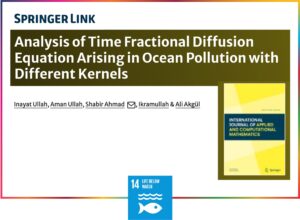
In collaboration with researcher Akgül from Near East University, a recent study focused on solving ocean oil equations using three distinct fractional operators. The investigation primarily examined the Caputo fractional derivative, the Caputo–Fabrizio derivative, and the Atangana–Baleanu derivative in the context of one-dimensional fractional ocean oil equations. Employing the Laplace transform (LT) as a reliable analytical method with high convergence rates, the study aimed to derive accurate solutions for these equations.
The research team devised a systematic approach for solving time-fractional diffusion equations under nonlocal operators with varying kernels. By leveraging the LT method, approximate solutions for equations under the Caputo, CF, and ABC operators were computed. This enabled a detailed exploration of fluid density dynamics across different fractional orders.
Numerical analyses conducted using MATLAB-17 facilitated the investigation into fluid density behavior, revealing its sensitivity to fractional orders. Even minor changes in fractional orders were observed to exert notable effects on fluid density. Comparative analyses of solutions obtained for the three nonlocal operators showcased differences in the evolution of the diffusion equation based on the type of kernel employed.
Interestingly, the study found that altering the kernel led to varied dynamics in the proposed equations. While the evolution was similar for CF and ABC operators, it differed significantly for the Caputo operator. Through meticulous comparison using tables and graphs, the study concluded that CF and ABC operators demonstrated superior performance in evolving fluid density dynamics compared to the Caputo operator.
These findings provide valuable insights into the behavior of fractional diffusion equations under different nonlocal operators, offering avenues for further research. Future investigations could explore the application of fractal-fractional operators, address nonlinear problems related to the proposed equations, and consider alternative analytical techniques. Additionally, studying diffusion equations in fuzzy settings using both integer and fractional operators presents promising avenues for exploration.
By elucidating the complexities of fractional diffusion equations and their solutions under various operators, this study contributes to advancing the understanding of fluid dynamics. Such insights have potential applications in diverse scientific and engineering fields.
More Information:
https://link.springer.com/article/10.1007/s40819-023-01498-3